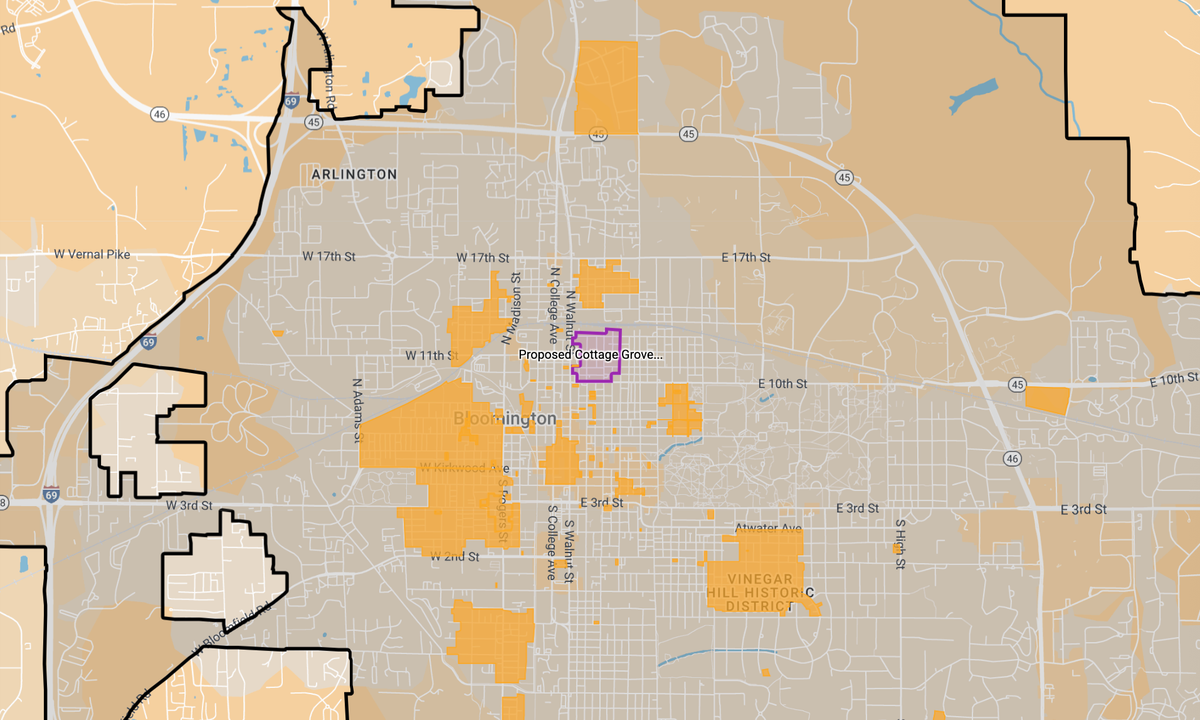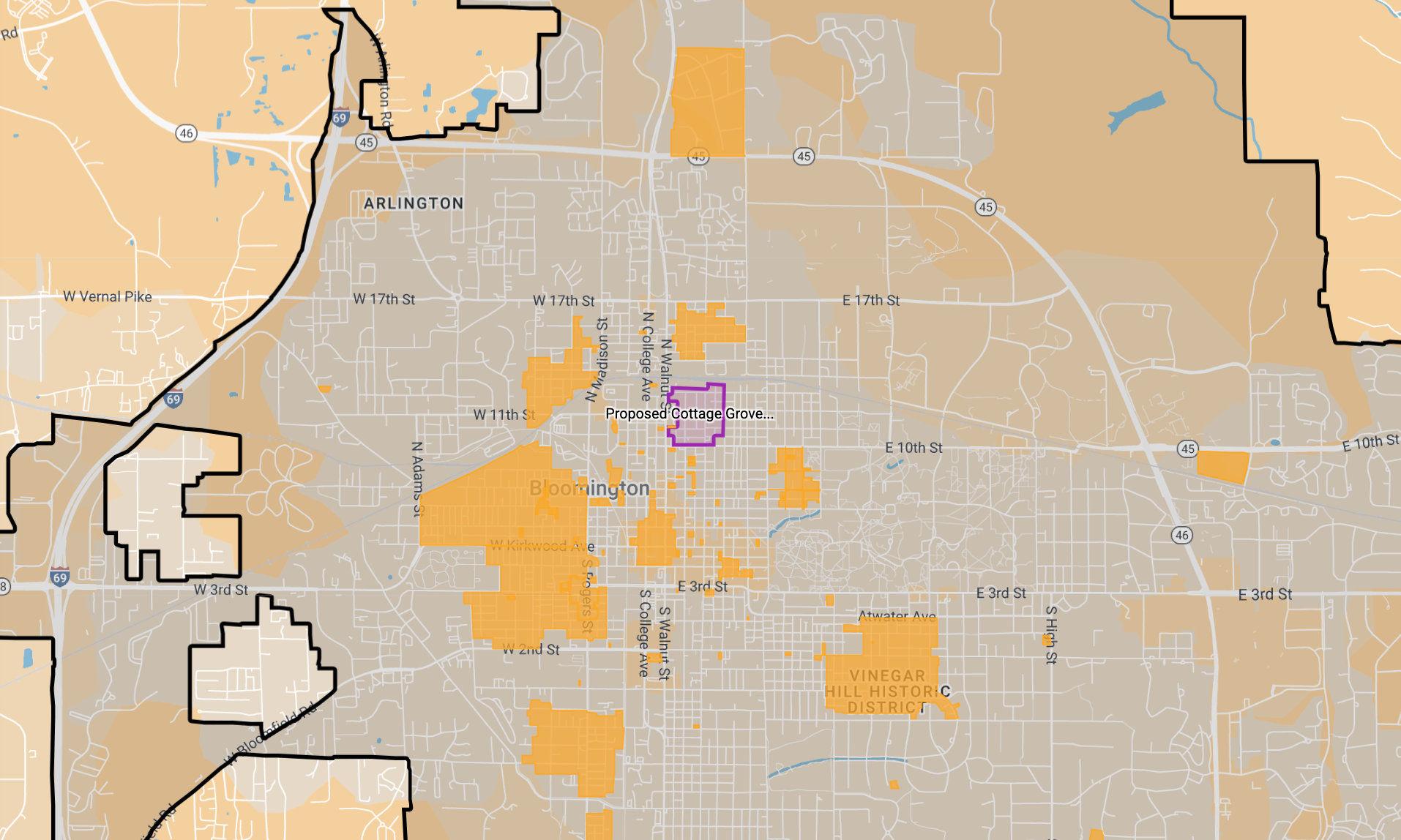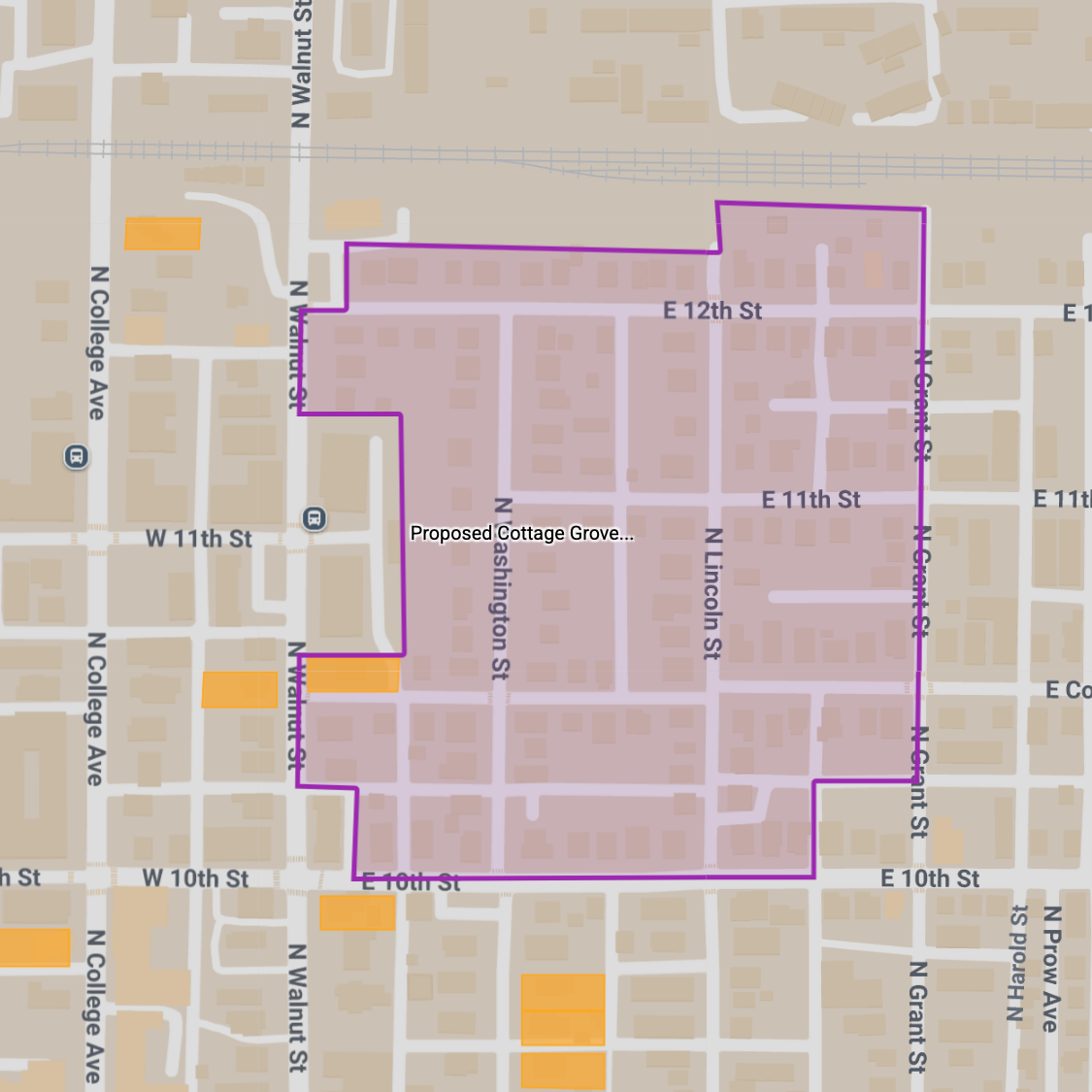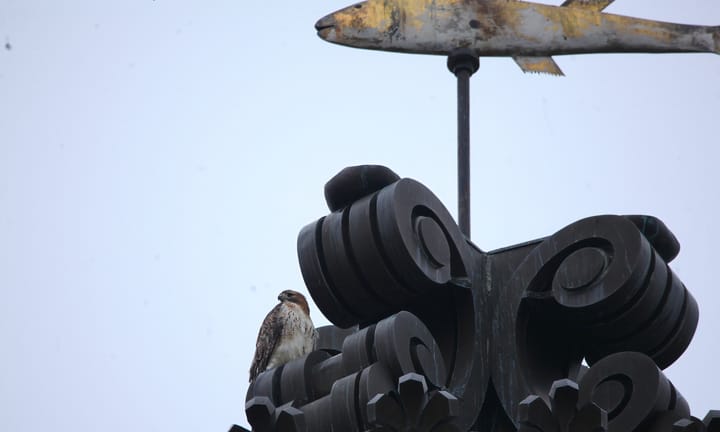Historic protections sought for area between 10th, 12th streets in central Bloomington
Property owners and others with views about the idea of establishing a conservation district in central Bloomington met on Monday night at the downtown branch of the Monroe County Public Library.



The yellow areas are existing historic districts. The area outlined in purple is a draft map of a proposed new conservation district which could be called Cottage Grove Historic District. Map by The B Square with information provided at the Sept. 29, 2025 public meeting and city government sources. [dynamic map]
Property owners and others with views about the idea of establishing a conservation district, called Cottage Grove Historic District in central Bloomington, met on Monday night at the downtown branch of the Monroe County Public Library.
There was not universal enthusiasm for the proposal in the room, but it looks likely that there will be enough support for it to eventually move ahead to at least a review by the city’s historic preservation commission and then possibly to the city council.
It was the second of three meetings that the city’s HAND (Housing and Neighborhood Development) requires before submission of an application to establish a conservation district.
Meeting presenter John Butler showed a draft map of the proposed district to a group of about a dozen and a half property owners and other meeting attendees. The current draft shows an area roughly bounded on the east and west by Grant and Walnut streets and on the north and south by 12th and 10th streets.
Spurring the effort to establish a conservation district, which could eventually become a historic district, have been several proposed demolitions in the area. It was the proposed demolition of a house on East 12th Street—Butler’s childhood home—that sparked his acute interest. Even though the immediate demolition of the house has been averted, through an agreement for him to purchase the house, Butler is keen to seek broader protections for the longer term.
In a historic district, any exterior alterations are subject to review by the city’s historic preservation commission (HPC). In a conservation district, it’s just moving or demolishing buildings, or constructing new buildings that are subject to HPC review.
The criteria in Bloomington’s municipal code for establishing historic district protections include historical factors, such as connections to significant people, events, or cultural heritage, and architectural factors, such as distinctive styles, innovative craftsmanship, or design features that shape the city’s visual character.
The case for the establishment of a conservation district will likely include, at least in part, architectural features. Butler ticked through descriptions of some of the 18 houses in the proposed district that are “notable,” including the city’s only remaining brick Queen Anne house on Walnut Street, a Tudor Revival on Washington Street, an American Foursquare also on Washington, and a house featuring Bloomington’s only belvedere—a rooftop pavilion—on 12th Street.
According to Butler the area includes predominantly rental properties—only 11% of homes are owner-occupied, while 89% are rentals.
Questions from attendees included how the draft district boundaries were decided—starting with a rectangle then carving away some of the corners and sides. Butler said some of the structures just did not seem to warrant inclusion in a historic district. As an example, he gave the Domino’s Pizza building just south of the railroad tracks on the east side of Walnut Street.
One attendee wanted to know whether a uniform-looking map or a more jagged map had a better chance of getting approved. It’s mainly just important that the logic behind the map boundaries be clear, said chair of Bloomington’s HPC, Sam DeSollar, who attended the meeting to help answer questions.
DeSollar also gave some zoning background for the recent development efforts that the area has seen in the form of requests for demolition permits. “Your neighborhood has been zoned residential multi-family, which allows developers to build more dense, taller structures,” DeSollar said.
To the zoning mix, rental property owner Doug Horn added the fact that “a building has a physical and economic life cycle, and a number of them [in the proposed district] have far exceeded both,” which he thinks is also driving the current efforts at development in the area.
Horn also questioned the naming of the district as Cottage Grove, which as an addition to the city actually included another large swath to the east, where he owns property. He stressed that he was not implying support for the idea that the proposed district should be extended eastward, but rather that the name should be reconsidered. Horn’s name will also be familiar as a member of Bloomington Transit’s board of directors.
Jeff Brawley, who also owns properties in and near the area, questioned the impact on property values and future development: “If I can build 10 beds versus three beds, I can pay a lot more for that land, a lot more for that property.”
Butler stressed that the map’s boundaries are not decided, saying, “I’m not married to this map.” Chiming in was Amy Butler, who was supporting the presentation and quipped “He’s married to me!”
The third and final required public meeting date has not yet been decided, Butler said. After that meeting is held, it would be a matter of assembling the application and submitting it to the HPC for their review and possible recommendation to the city council. [Added Sept. 30, 2025 at 3:45 a.m. Amy Butler indicates that the intention is to hold more than the minimum three required meetings.]




Comments ()